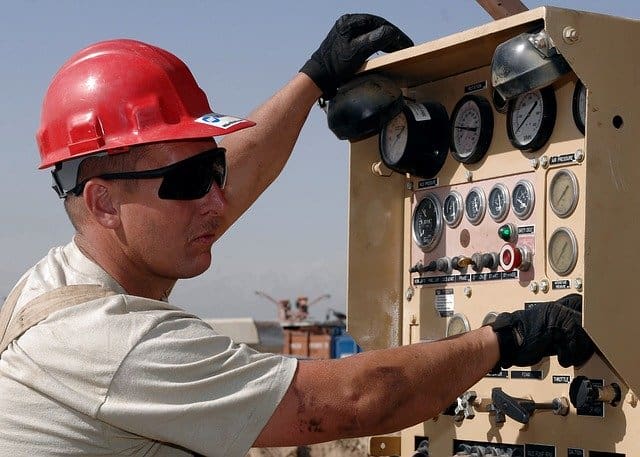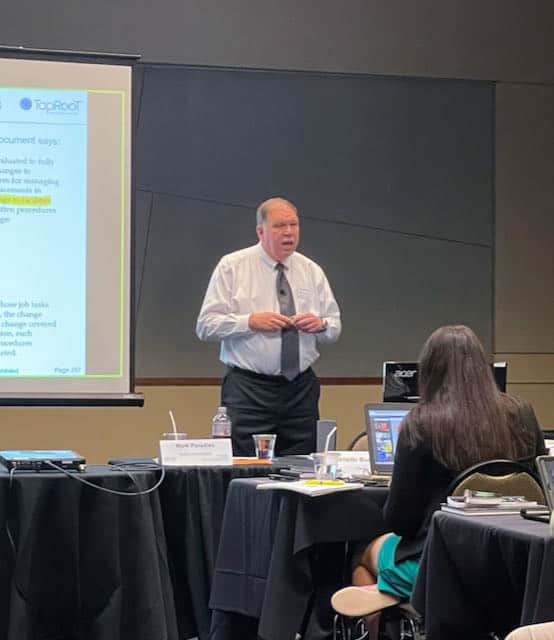Human Performance Improvement

Human Performance Improvement – Everything You Need to Know?
The International Atomic Energy Agency (IAEA) wiki on nuclear knowledge management defines Human Performance Improvement (or Human Performance Technology) as:
“The systematic process of discovering and analyzing
important human performance gaps, planning for future
improvements in human performance, designing and
developing cost-effective and ethically justifiable
interventions to close performance gaps, implementing
the interventions, and evaluating the financial
and non-financial results.”
In short, Human Performance Improvement is the process of improving your systems by focusing on and fixing things that could cause human errors.
The Department of Energy (DOE) sees Human Performance Improvement (HPI) as applying a set of concepts and principles to strategically improve performance. Those concepts include:
- Reducing Human Error
- Managing Controls to Reduce Unwanted Events
What methods should we use to reduce human error and control unwanted events?
The most common answer found is to use Human Performance Improvement Tools to keep people from making mistakes. HPI includes a long list of tools that are designed to give you the ability to catch potential human errors before they become mistakes. Tools like:
- Questioning Attitude
- STAR
- Time Out (Stop When Unsure)
- Attention to Detail
- Error Traps and Precursors
- Validate Assumptions
This is just a small sample of the potential tools but you can’t help but notice a pattern with many of the Human Performance Improvement Tools:
Blame!

Many of these tools rely on people (operators or mechanics performing work) to catch their own mistakes. These tools can sound like:
“Be more careful.”
to the workers.
Is there a better way to improve human performance?
What things can you do to improve human performance that go beyond blame and being careful? We recommend a systems approach that is focused on the following:
- Building processes to find error likely situations
- Taking a systematic approach to training
- Creating Standards for Procedures, Communications, and Quality Control
- Improving your Management System Communication, Enforcement, Audits, and Trending
- Utilizing Conservative Decision Making
- Making your process intuitive to do right, hard to do wrong, with good Human Factors Engineering
- Focusing on reengineering the problem process to reduce the hazard or remove/guard the target
Understanding these concepts and tools can be tricky. Not all human performance improvement tools are created equal as discussed in this video…
Some tools have a basis in human factors research, while others sound nice in theory but are not supported by research.

Mark Paradies wants you to understanding what tools work and what tools are a waste of time (or worse). Mark is a human factors expert and Board Certified Ergonomist (certificate #85) with decades of Human Performance knowledge and experience. He put all of this experience into the new Stopping Human Error book and course. TapRooT®’s Stopping Human Error course will help you understand:
- The causes of human error
- Human factors design best practices
- Methods to find error likely situations
- Techniques to help supervisors and workers prevent human errors
- CHAP (Critical Human Action Profile)
- Human Performance improvement Technology
- Designing your human performance improvement program.
Here is the course outline:
Stopping Human Error Course Outline
Day 1 (9:00am to 5:00pm)
- Foundations of Improving Human Performance
- Human Performance – What Should You Expect?
- Three Human Reliability Best Practices
- Mistake Proofing
- Resilience
- Safeguards
- Using TapRooT® Root Cause Analysis for Reactive Problem Analysis
- Human Performance Improvement Technology (Catch Your Own Mistakes)
- STAR
- Questioning Attitude
- Attention to Detail
- Time Out
- Error Traps & Precursors
- Validate Assumptions
- Work Direction/Finding Error Likely Situations
- Pre-Job Hazard Analysis
- Pre-Job Brief
- Personal Safety Assessment
- Post-Job Brief
- Training
- Systematic Approach to Training
- Using Procedures to Improve Human Performance
- Procedures Best Practices
- Procedure Use and Adherence
- Place Keeping
Day 2 (9:00am to 5:00pm)
- Communications
- 3-Way Communication
- Do Not Disturb Sign
- Management System
- Conservative Decision Making
- Stopping Normalization of Deviation
- MOC
- Quality Control
- Independent Verification
- Concurrent Verification
- Human Factors Engineering
- Best Practices (Spot Bad Practices)
- Proactive Use of CHAP
- Hazard/Target Elimination or Substitution
- Improvement Exercise
- What Should You Improve/Which Tools Will Work Best for You?
- Sample Plan
- Present Your Plan (Benchmarking/Feedback)
With the exercises built-in to try the techniques, this is an active, quick-moving 2-day course.
This course is a must if you are developing a Human Performance Improvement Program at your facility.
To sign up for an upcoming course click the link below…




